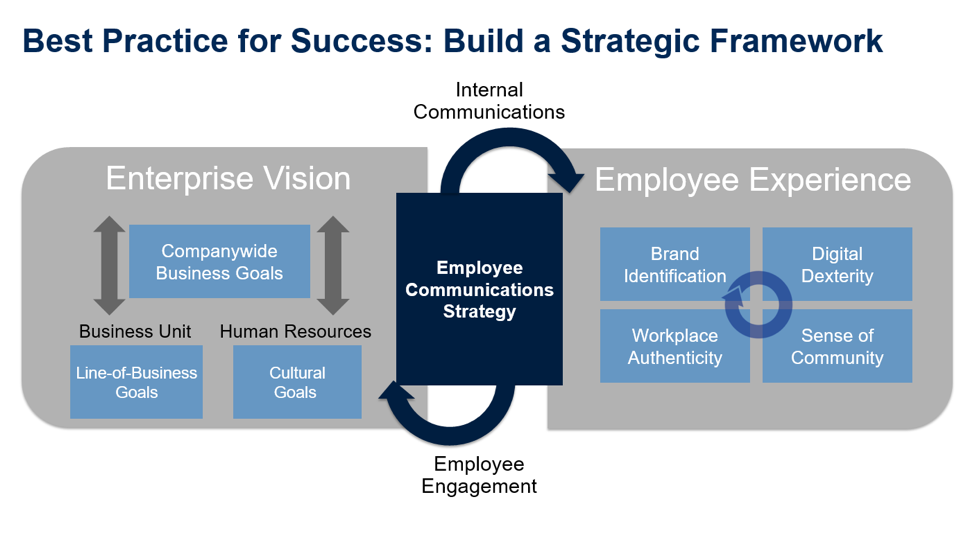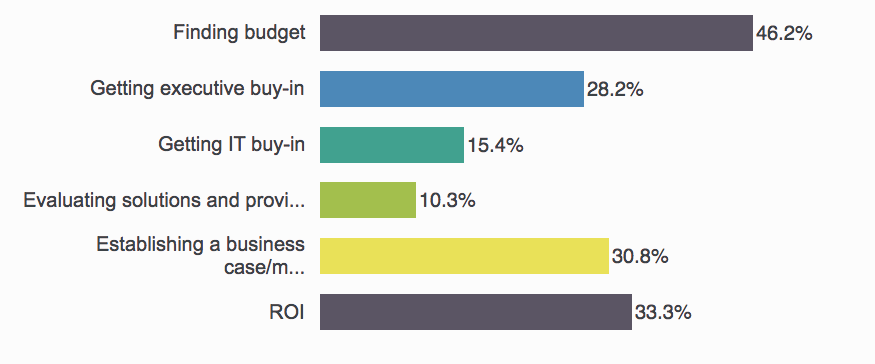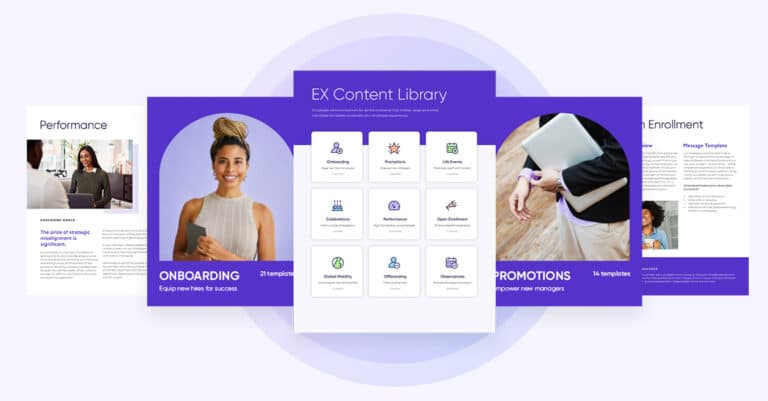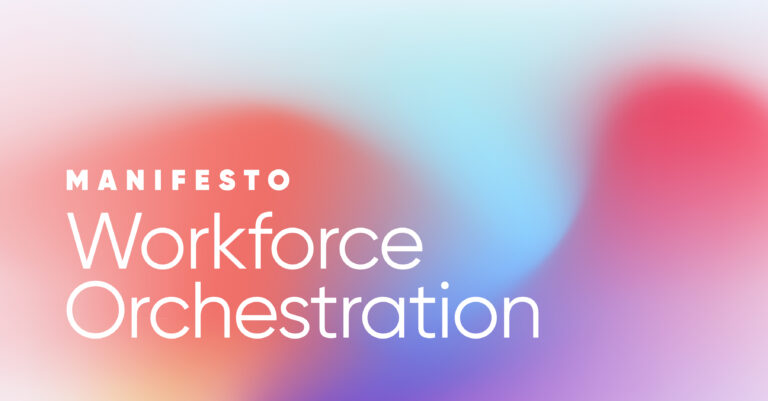Highlights from Firstup’s webinar on The Future State of the Digital Workplace featuring Gartner
When we talk about the digital transformation of the workplace, we often focus on the business or technical aspects: supply chains, artificial intelligence, product services, and a whole host of other ways to gain efficiencies from new technology. Yet, some leaders seem to forget about those most impacted by a digital transformation: their employees. When employee experience is not part of the digital transformation journey, the entire initiative is at risk.
Firstup hosted a webinar featuring Mike Gotta, Research VP at Gartner, on the topic of The Future State of the Digital Workplace. Mike presented his extensive experience and insights on organizational digital transformation, where the digital workplace is part of this initiative. And at the center between the enterprise vision and employee experience is employee engagement driven by internal communications.

Gartner presentation, The Strategic Role of Employee Communications in the Digital Workplace, Mike Gotta, Gartner Digital Workplace Summit 2018, 24 – 25 September 2018 / London, UK
Three reasons why internal communications is at the core
1. With any company initiative, its success depends on whether employees are able—and motivated—to meet business goals and drive success.
If a majority of employees feel disconnected from the business and don’t understand why decisions are being made, the organization’s program is likely to fail.
Which is why internal communications and reaching every employee are essential. If employees aren’t getting relevant information, they may not understand or even know about company-wide business goals. Ultimately, good internal communications support employee engagement that drives desired business outcomes.
And a more connected workforce is a catalyst for improved business results.
2. Strong internal communications drive and sustain change.
Because communications are the key link that connects employee experience, company-wide business goals, and digital transformation, HR and internal communications must step up to facilitate transformation across the board.
You need to have a communications program that pulls everything together. And it can’t be an afterthought, it has to be a fully integrated campaign. HR and communicators should think like digital marketers, adopting skills like employee journey mapping.
There is a need for a comprehensive communications strategy to explore each point of employee collaboration and to measure communications data. With detailed metrics and feedback, communicators can continually improve internal communications at every step, with all types of employees—from gig workers to employees out in the field.
3. HR and communicators need to reach employees on their terms and involve them in the company story.
Some tools just don’t work well, such as email or intranet alone, or even enterprise social networks. However, employee communication platforms span across the entire workforce and can connect many tools. They not only integrate with other systems (combining the best from each individual resource) but are better for communicating to hard-to-reach employees, such as frontline or deskless workers, who are finally getting the attention they were lacking.
Mike talked about the mindset of “How do I create proper communications?” and spoke on the importance of a brand story that comes from a company’s own history: the “goodness” of what it has done in the past. If you can put employees in the company story, they become actors in that story, so that you create a groundswell where employees are stakeholders in the success of the digital transformation initiative.
Organizations that use integrations and can offer a single point of publishing tool to multiple channels, along with a strong communications strategy, will truly reach every employee, wherever they are, to drive the desired transformation.
Digital workplace transformation is really happening
We wanted to gauge our audience’s perspective on the digital workplace with two polls during our webinar. Were any companies actively driving such an initiative? From the first poll question, it was clear that it was definitely top of mind, with over 50% responding they were currently working on digital workplace transformation.
Firstup Q1: Are you currently working on a digital workplace transformation?

Of course, with every new initiative, there are challenges. We wanted to know what those were.
Firstup Q2: What are the biggest blockers to digital transformation?

In a recent Gartner CIO Survey, “respondents were asked whether they have a management initiative or transformation program to make their business more digital. The majority (62 percent) said they did.” From our audience’s responses, it simply is not that easy. Finding budget was the predominant challenge to making digital transformation happen, according to our second audience poll. Next was establishing ROI for the initiative, followed by establishing a business case, and convincing leadership.
According to our audience, HR and communicators are struggling to make digital transformation a reality. It could be that their CEOs do not truly understand the role internal communications plays with employee experience and how it drives change. Or perhaps communicators still don’t have a seat at the table, so they are experience challenges like budget, ROI, and getting executive buy-in.
Where does your organization stand on digital transformation? Whether it’s going strong or needs more buy-in from leadership, watch the entire webinar recording of Firstup’s The Future State of the Digital Workplace featuring Gartner, to learn how HR and Communications can prepare for the future of work today.
Deliver a hyper-personalized employee experience at scale
Download PDF







